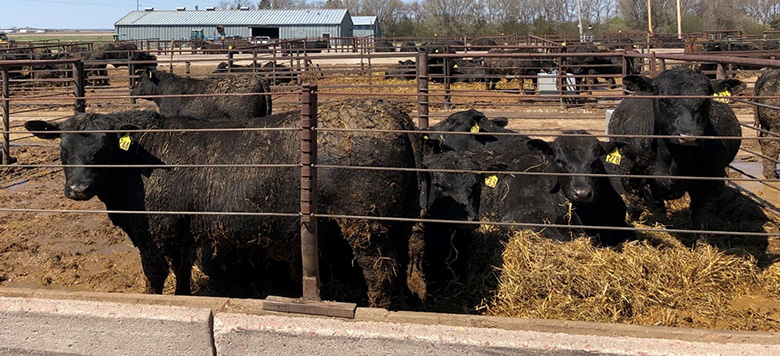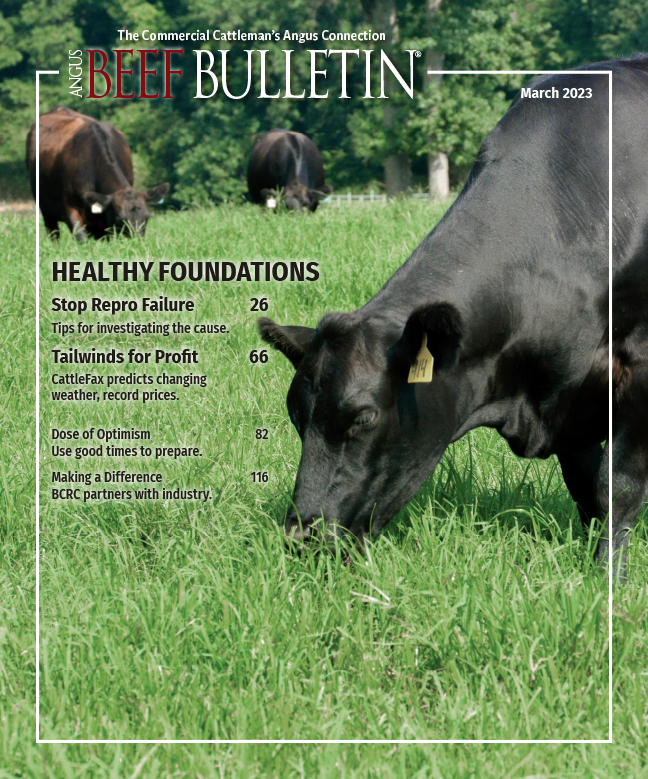
Is There Value to Bedding?
Research shows gains in performance, cattle comfort.
Be it summer, spring, winter or fall, farmers and ranchers across the country constantly face the challenge of weather issues. Many states don’t even know what “normal” weather is anymore. So, without being able to control weather, can cattlemen maintain performance with management?
During a Cattlemen’s College® session at the 2023 Cattle Industry Convention, Zachary Smith, an animal science professor at South Dakota State University (SDSU), said his wife asked him a simple question that ended up being the topic for one of his first research studies focused on weather.
“My wife asked me if we bed cattle, and I said, ‘Yes, of course we bed cattle,’” Smith said. “After some quizzing and surveying, I found out bedding wasn’t as common as I thought.”
Smith and his team conducted their first bedding study from January to July 2019. The study included 240 steers, with an initial weight of 800 pounds (lb.), allocated to 30 pens. Cattle were assigned one of two treatments — bedding or no bedding. Cattle without bedding were stocked at about 80 square feet (sq. ft.) per head on concrete, and pens were not scraped. Those with bedding received about 4 lb. of straw every third, fourth or fifth day, depending on the condition of the pen.
A month into the study, Smith highlighted the visual difference bedding made during a 12° day. If a picture is worth a thousand words, a video might be worth 10,000, said Smith as he illustrated the stark difference in the comfort of cattle with bedding vs. those without, which were standing and exhausted.
To illustrate the concept of energy for different types of heat loss, Smith shared another photo where a steer has a raised and hunched spine to reduce his outer surface areas attempting to maintain his body temperature. Smith said this means he is burning feed that could be otherwise used for gain and maintenance.
“In the first 36 days, when it was really cold out, the cattle that didn’t have bedding weighed 35 pounds less, meaning they lost a pound of average daily gain in the first 36 days,” Smith said.
Cumulatively, throughout the 150-day study, cattle on bedding had improved growth performance and efficiency. Their average daily gain increased 21% and dry-matter intake increased 5.9%. Their feed-to-gain ratio had a 14.6% improvement, and it took 35 fewer days to reach the same end point compared to cattle that didn’t receive bedding, Smith said.
The remaining question to be answered is, What is the value of bedding? Given the complicated nature of the value, Smith and his team created a calculator. The equation tallied the cost of feed, loader and labor; yardage; and bedding materials. Results showed the value of bedding to be $1.21 per pound of gain.
Overall, the return on investment ranged from 2-to-1 to 1-to-1, meaning it isn’t a high-yielding return on investment, Smith said. “Even if there was zero return, I still think bedding is the right thing to do because it enhanced cattle comfort.”
He also pointed out they bought bedding regardless, because cattle without bedding took 35 more days of yardage and fees to get to the same end point.
Editor’s note: Whitney Whitaker is a former communications specialist for the American Angus Association. [Photo by Zachary Smith, South Dakota State University.]



